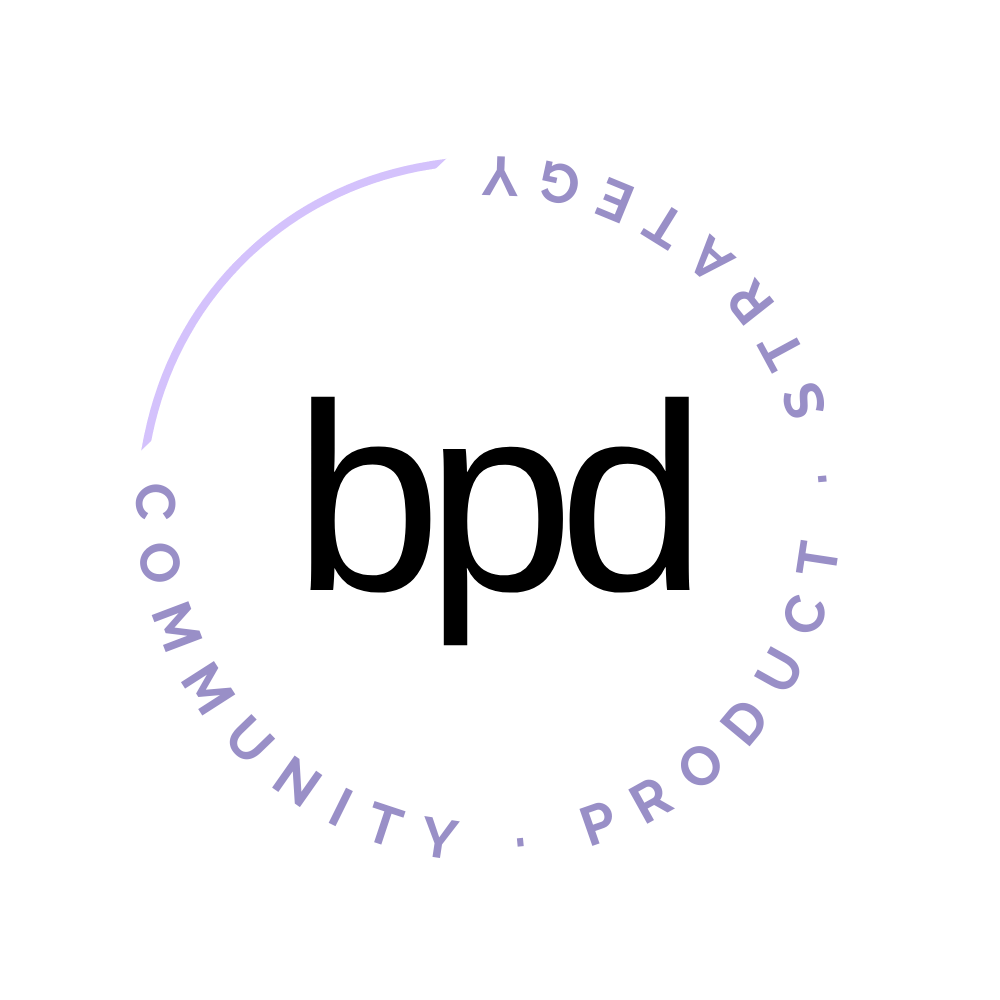#08 ABC Principles: Simple Ideas to Improve your Community Experience
In the past two weeks of my UX Design course through General Assembly I’ve taught lessons on information architecture and design systems. And it got me thinking about the key principles that I can share from these lessons to help you build a better community-driven product.
I call these the ABCs principles. The simple ideas that can improve your community experience, improve your retention and even reduce your overwhelm.
Archive Content
Binary Choices
Calls to Action
Simplify Architecture
Let’s break these down 👇
Archive Content
When we join a new community the notifications, unread posts, and content to sift through can be overwhelming. Over time as facilitators and managers we allow content to build up and all of a sudden we’ve built a mountain of resources for our members to sift through.
Set up a cadence to review content for archive:
What hasn’t been viewed or downloaded in 6+ months?
Does it need to be refreshed or does it need to go?
Does all content still feel aligned to the brand, mission and goal of the business?
One caveat to this concept is that if you archive a lot at once and your members are aware of the updates you’ll want to have a back-up archive drive ready to share. At bossbabe we retired 30 of our masterclasses but we have a PDF available with links to the archived trainings for download.
If you’re just starting remember that less is more. Start with the minimum that is needed and then learn and add over time. Continue to follow this process to reduce content overwhelm for your members.
Binary Choices
Do you ever give your partner or friend a couple options for a dinner location and they just throw it back to you? Most people have a hard time making decisions. We call this “decision friction” – where there are so many choices that we get overwhelmed and never end up deciding.
Two choices are already a lot for us to process. When you’re crafting your community journey map, make sure to consider where decision friction may come to play.
I once worked on a project that helped aging adults keep their independence by helping them manage their day, caretakers, medications and routines. During usability testing (testing the design of the product before building it) of the bed-side device I was designing I learned that the aging adults struggled to answer a question about how they were feeling. It had 3 responses as possible options. When I reduced the options to 2 it had much better results– a binary choice was easier to process.
In my research about accessible design I realized that accessible design is better for everyone– not just the elderly, the visually impaired, or those that experience disabilities. By providing two choices we reduce the cognitive load and create a better experience for members.
Reflect on the choices in your product and content strategy:
Where can you reduce 3, 4 or 5 options to 2?
Where can you recommend a choice but offer one alternative?
Calls To Action (CTA)
Jay Clouse talks about the idea in community building that you always want to answer the question “Now what?”
Take a walk through your user journey and ask yourself if “now what?” is answered at each step.
Is it clear which way to go?
If there is a choice (ideally binary) is there enough context to help them make a decision?
Are you using clear copy? “Fun” button copy can be a real detractor in conversion. People are more likely to click a button if they know what happens if they click it. Be explicit.
Is there a clear contrast and visual design of the CTA? Underlined blue text is a pattern we recognize. A primary button featuring a contrasting color is a pattern we recognize. Avoid breaking patterns.
The hard truth:
When members / users don’t know what to do next they will leave and… they may never come back.
Simplify Architecture
Information architecture (IA) is the way that we organize, structure and label content in a way that is useful and understandable for our members.
By simplifying your IA, you can create a more intuitive experience for your members, reducing their cognitive load and making it easier for them to find what they need.
Things to consider when simplifying IA:
Now that you’ve archived content are there any areas of your organization that can be removed?
How might elements be better organized to simplify the interface?
Create a hierarchy of information that makes sense
Group content by topic or theme
Use clear and concise labels for navigation
Can any elements be hidden or removed to drive focus toward more important elements?
If you apply these principles to your product I’d love to hear how it impacts your community experience and what kind of feedback you get. Write to me and let me know!
If you loved this article and you’re not yet subscribed to my newsletter, you can subscribe here. I send you my weekly essay along with a few resources each week (only available in the email newsletter).

